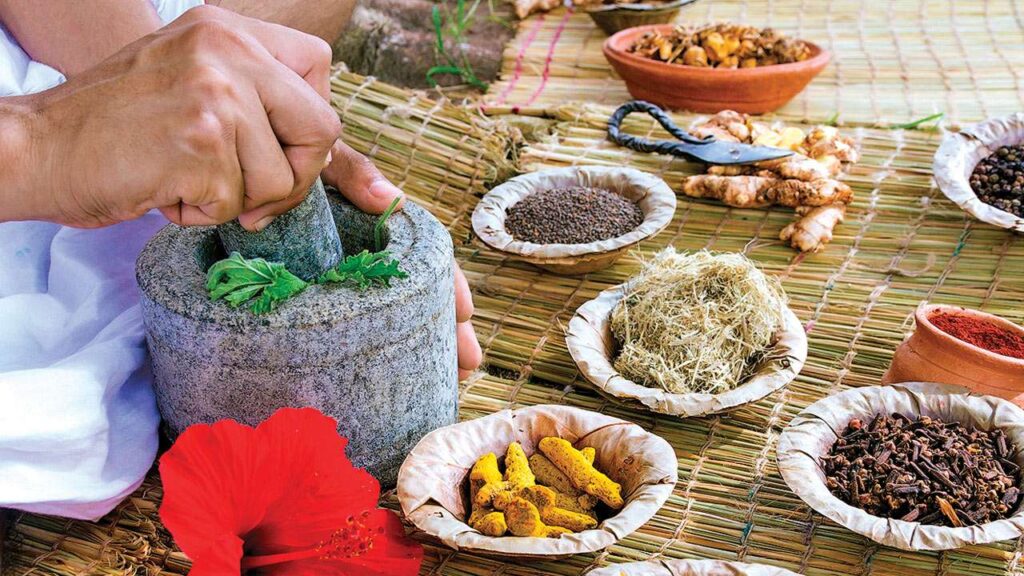Nanotechnology is the engineering used at the scale of atoms and molecules. Nano device and nano strategy are one billionth of a meter or 10-9 m.
The science of nanotechnology clumps atoms, molecules and molecular fragments into extremely small particles between 1 and 100 nm and puts forward the interactions of molecular level matters too.
It is a new branch of advanced science as well as an emerging technology in the drug discovery. It has the property of self-targeting at the particular place without the attachment due to the distinctively small size. Few formulations are already present in the market. This new approach has attracted many scientists to improve and to accelerate the joint drug discovery and development of novel nano delivery systems for herbal extracts.

With growing importance of use of nanotechnology for therapeutic purposes, the advent of engineered nanoparticles in therapeutics is alarming for their possible harmful effects. The concept of nanotechnology is not new but it has been a common practice in Ayurveda. Ayurvedic texts like Rasshastra and Bhaishjya Kalpana cover the inorganic pharmaceutical preparations like metallics, non-metallics and herbo-mineral compounds of various Ayurvedic formulations. Bhasma is the herbo-mineral metallic drug preparation unique to Ayurveda. These are prepared with herbal juices and are quite effective for the treatment of various chronic ailments.
The ancient application of nanomedicine in the form of Ayurvedic Bhasma throws a light on the present nanomedicine.
The concept of using nanoparticle is prevailing since the time of Master Charak.
Bhasma as a Nanoparticle:
A Bhasma means an ash obtained through incineration. The initiated material undergoes an elaborate process of shodhana (purification) which is followed by a reaction phase. This phase involves the incorporation of some other mineral and herbal extracts. Then, the material that is obtained in the pellet form is incinerated in a furnace. The end product thus formed is a non-toxic material. Therefore, bhasmas are biologically produced nanoparticles, which are prescribed with several other medicines of Ayurveda.
Some examples of Bhasma are: Swarna Bhasma, Tamra Bhasma, Shankh Bhasma etc.
Ayurvedic Bhasma and Nanotechnolgy:
During Bhasmikarna, metals or minerals are subjected to various processes of purification and incineration before internal administration, aimed to reduce their particle size and thus converting them into biocompatible for the body.
Swarna Bhasma used in Ayurvedic medicine has been characterized as globular particles of gold (56-57 nm).
The bhasam prepared by Mercury compound contains mercury sulphide (crystalline size 25-50 nm).
- The particle size in bhasma is 1-2 micrograms.
- The particle size of material is reduced as the effectiveness of bhasma with increasing number of Putapaka is mentioned in classical Ayurvedic texts.
- Bhasmas are nearer to nanocrystalline materials. According to the principles of nanotechnology, those nanocrystalline materials are solids that are composed of crystallites with size less than 100 nm in at least one dimension. Ayurvedic concept of Mardana (trituration) and Bhavana (levigation) to reduce particle size during preparation of bhasma is an ultimate result of these processes.
Some of the common properties of Bhasma are:

- They act as Rasayana (immunomodulation and anti-ageing)
- Yogvahi (target drug delivery)
- Alpamatra (prescribed in minute doses i.e. 15-250 mg/day)
- Rasibhava (easily absorbable, assimilable, adaptable, non-toxic)
- Shigravyapi (spreads quickly and fast acting in nature)
- Agnideepana (increases metabolism at cellular level and acts as a catalyst)
- Bhasma can be applied for selective/controlled /targeted drug delivery as it is biocompatible, non-toxic and non-antigenic in nature. For example, gold nanoparticles in Swarna Bhasma at 27 nm size have been found effective in ameliorating the symptoms of arthritis and at 4 nm size help in increased apoptosis in B-chronic lymphocytic leukemia.
- Few more examples of Bhasma commonly used in Ayurvedic practice are Mutka Shukti Bhasma (pearl-oyster calx) at 22.52 and 0.45 micro meter size in acidity, tuberculosis, cough, pyrexia, cough to increase the bone mineral density etc.
- Mandoor Bhasma (iron calx) in useful in microcytic anemia and hemolytic jaundice.
- Tamra Bhasma (copper calx) is used as hepatoprotective and antioxidant.
- Yashad Bhasma (zinc calx) is useful in myopia, low immunity, diabetes, leucorrhoea etc.
The methods used for manufacturing Bhasmas are in tune of nanotechnology of contemporary era and it has also proved the advancement of Rasshastra. These medicines are safe in therapeutics. Thus, we can say that Ayurvedic bhasma is the most ancient application of nanomedicine.
Disclaimer:-
This article is not a substitute to the standard Medical Diagnosis or personalized Ayurvedic Treatment! It is intended only for Information!
For experts consultation, please write us at care@blessayurveda.com.
2,961 total views, 3 views today